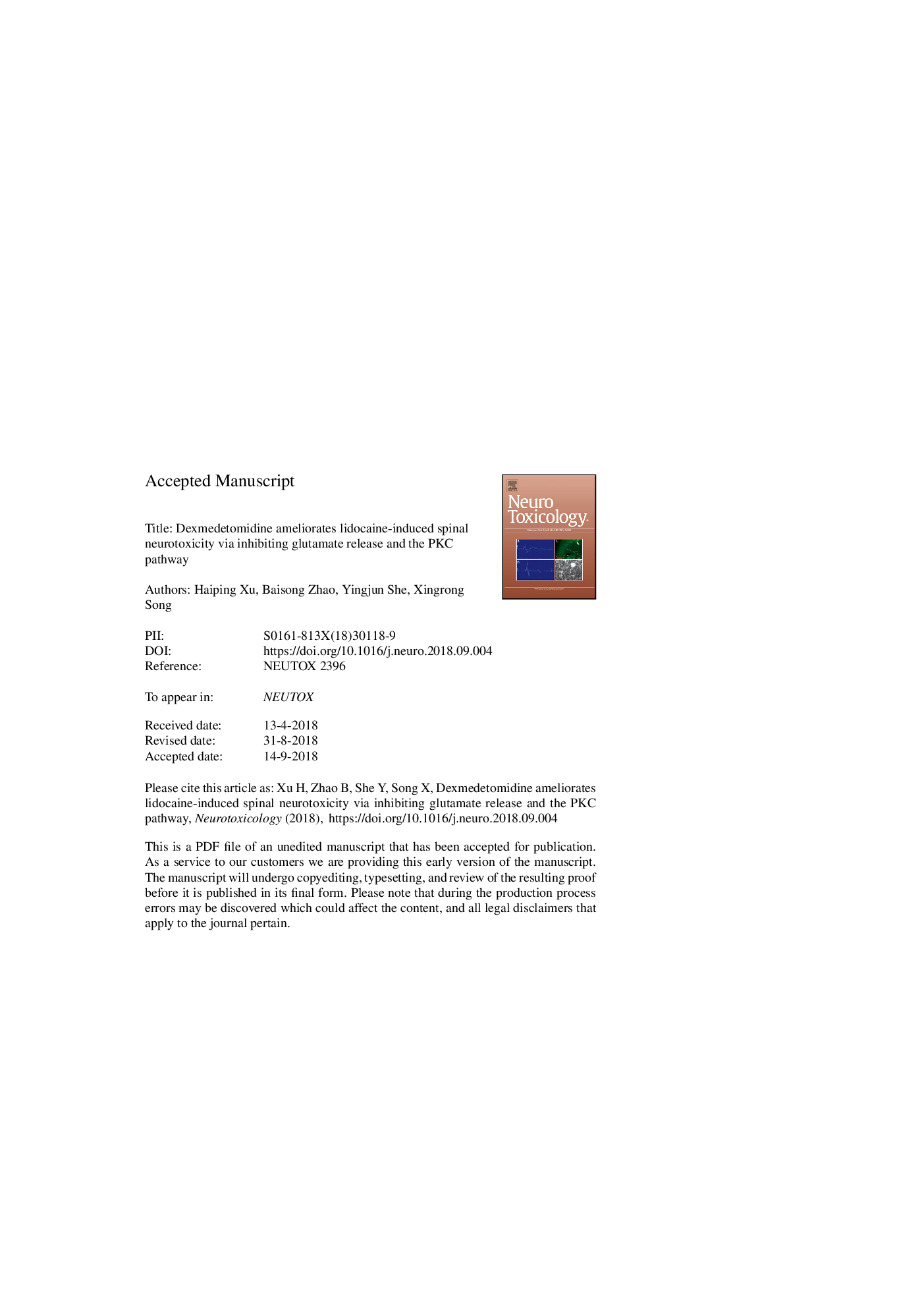| Article ID | Journal | Published Year | Pages | File Type |
|---|---|---|---|---|
| 11030731 | NeuroToxicology | 2018 | 23 Pages |
Abstract
Dexmedetomidine, a selective α2 adrenergic agonist, has been shown to have neuroprotective and anti-apoptotic effects. To further investigate the underlying mechanisms, we used a rat model of spinal neurotoxicity induced by intrathecal administration of lidocaine. Four days after intrathecal catheter implantation, rats received an intraperitoneal injection of various doses of dexmedetomidine before an intrathecal injection of 20âμL 10% lidocaine. Dexmedetomidine-pretreated rats were also exposed to a selective α2-adrenergic antagonist (yohimbine) or a specific protein kinase C (PKC) inhibitor (Gö 6983) that selectively inhibits several PKC isoforms. Lidocaine injection significantly damaged the spinal cord: hind limb locomotor function was reduced and tail-flick latency was prolonged; significant spinal cord damage and neuronal apoptosis were identified using histological and TUNEL staining assays; increased glutamate release was detected using high performance liquid chromatography (HPLC) analysis; and increased expression of PKC and PKCβI was detected using Western blotting analysis. Pretreatment with dexmedetomidine ameliorated all of the lidocaine-induced effects; however, this protection was abolished when yohimbine or Gö 6983 was injected together with dexmedetomidine. Our results indicate that dexmedetomidine protects the spinal cord from lidocaine-induced spinal neurotoxicity through regulating PKC expression and glutamate release.
Related Topics
Life Sciences
Environmental Science
Health, Toxicology and Mutagenesis
Authors
Haiping Xu, Baisong Zhao, Yingjun She, Xingrong Song,
